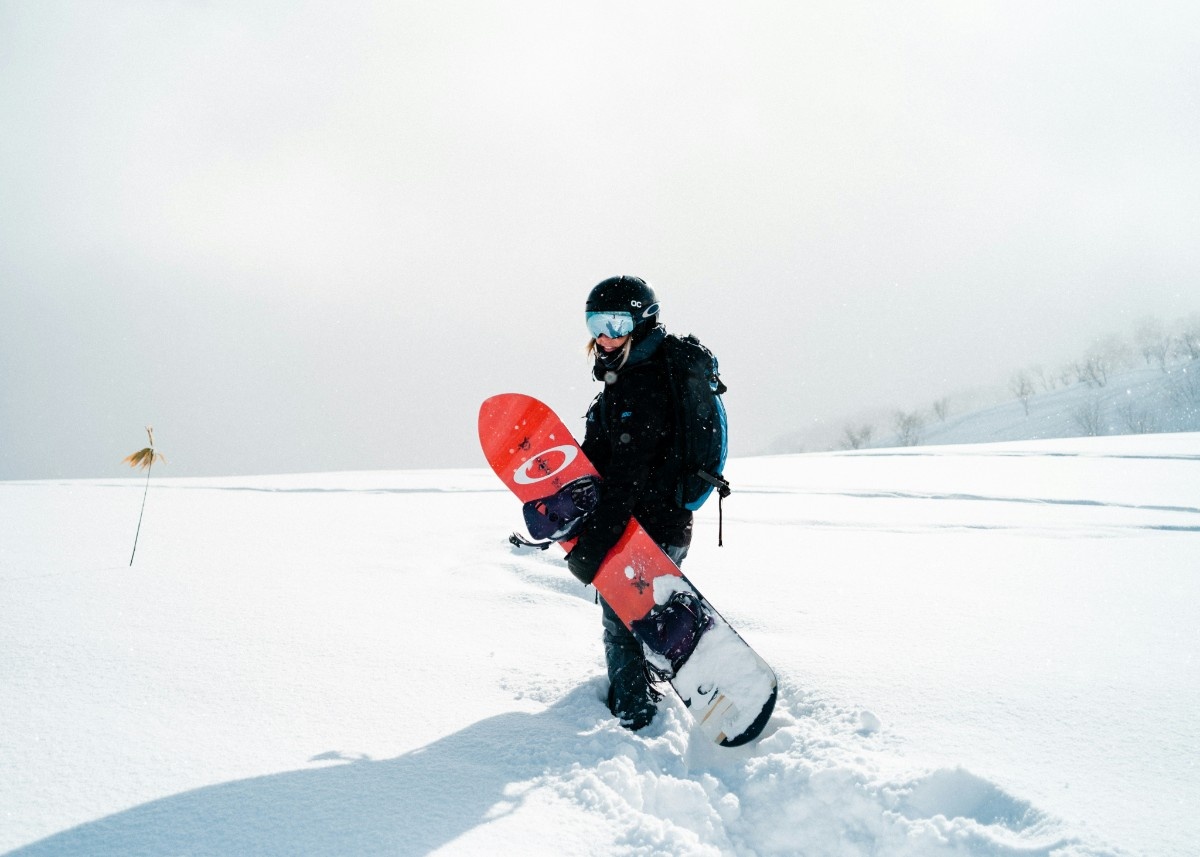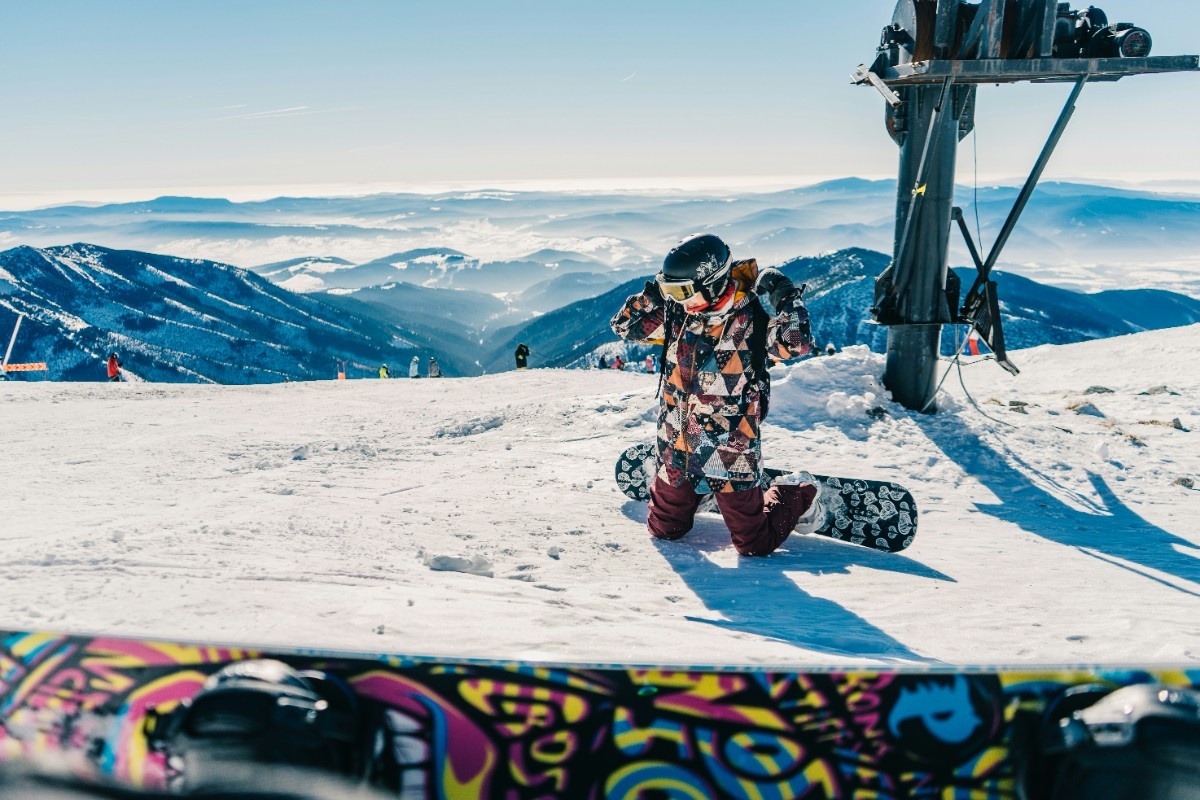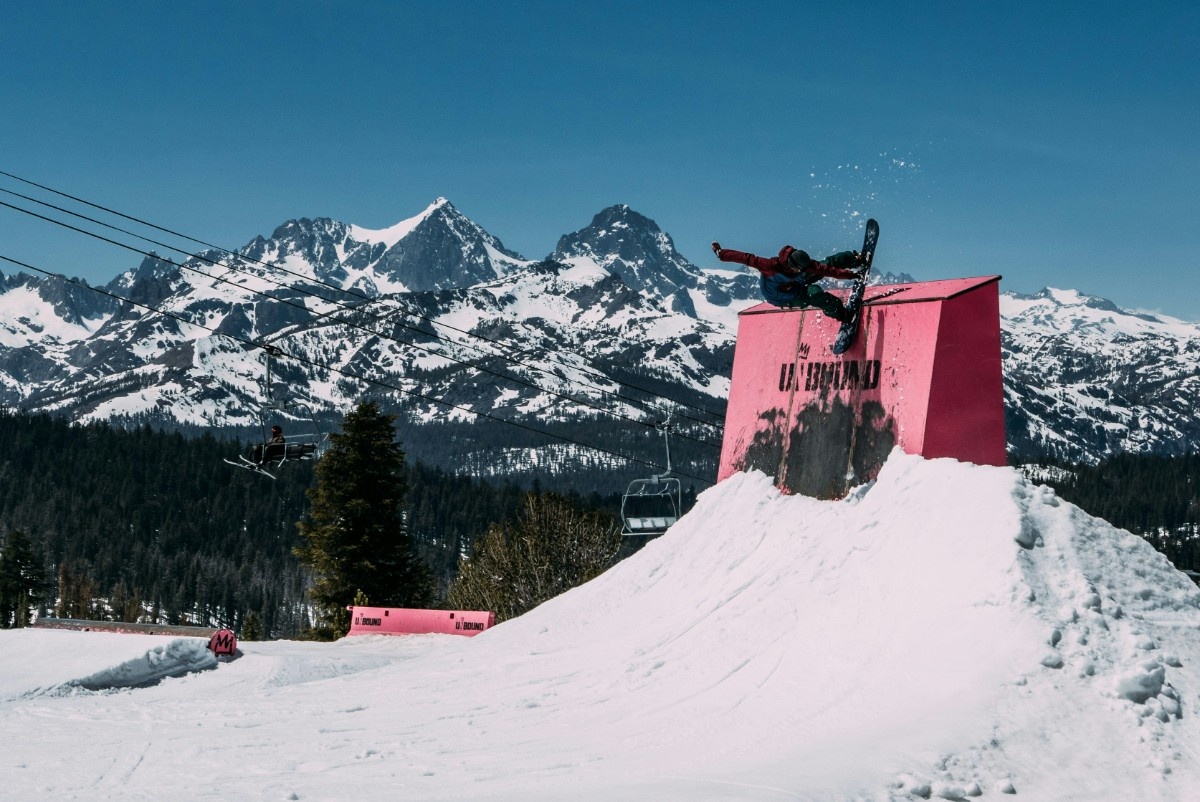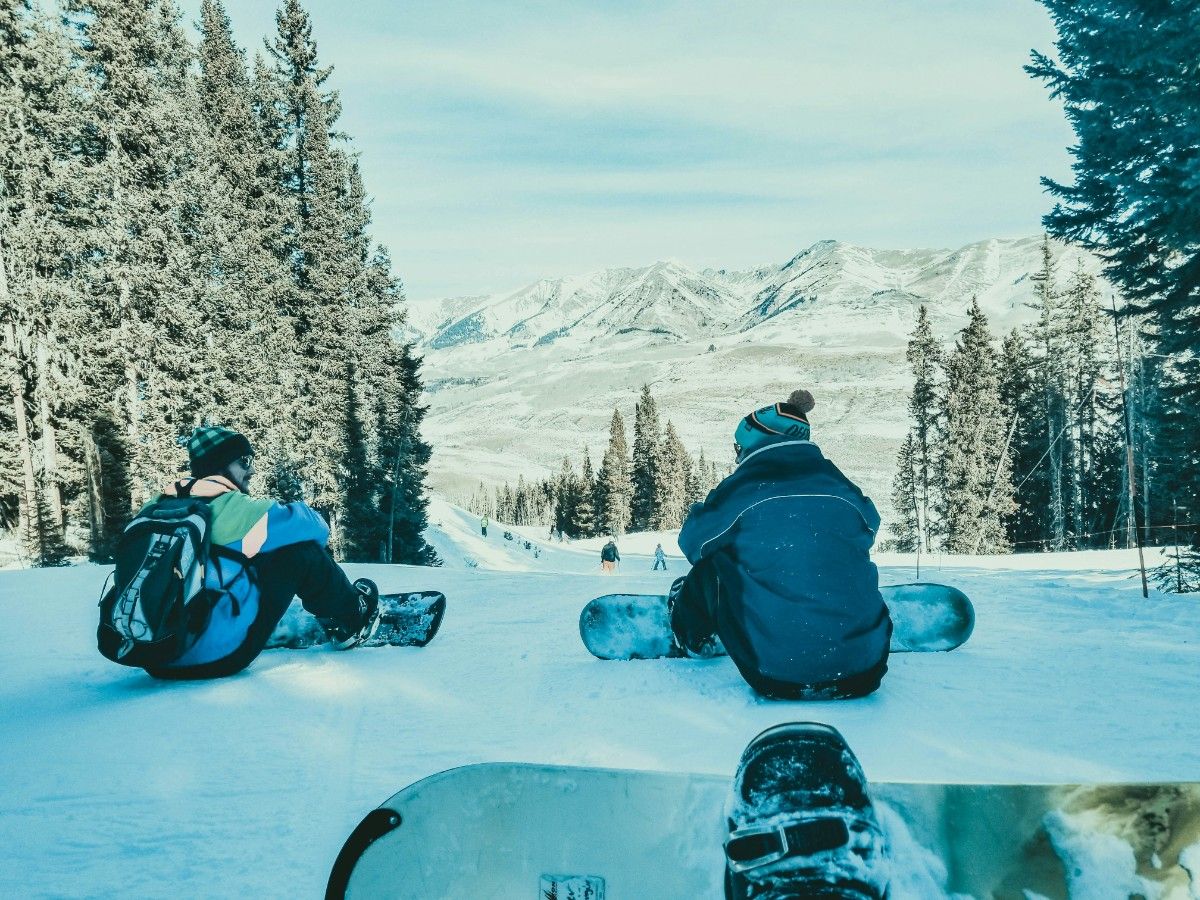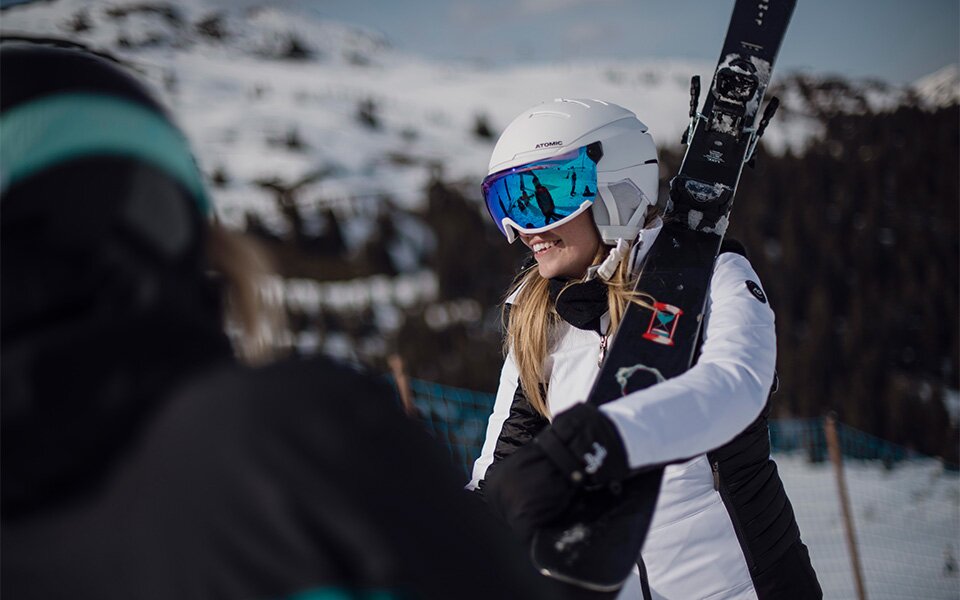Snowboard Jackets: A Buying Guide
Understanding Snowboard Jacket Technology
Waterproofing and Breathability
When it comes to snowboard jackets, two of the most crucial technological aspects are waterproofing and breathability. These features work hand in hand to keep you dry from both external moisture and internal perspiration. Waterproofing is measured in millimetres (mm), indicating the height of a water column the fabric can withstand before leaking. For instance, a jacket with a 10,000mm rating can withstand a 10-metre column of water before it starts to seep through. Most snowboarding jackets fall within the 5,000mm to 20,000mm range, with higher ratings offering better protection in wet conditions.
One of the most renowned waterproofing technologies is Gore-Tex. A Gore-Tex snowboard jacket utilises a membrane with over 9 billion pores per square inch. These pores are large enough to allow water vapour to escape but small enough to prevent water droplets from entering, making the jacket both waterproof and breathable. Other proprietary waterproofing technologies include eVent, Pertex, and brand-specific solutions like Burton's Dryride.
Breathability, on the other hand, is measured in grams (g) and indicates how much water vapour can pass through a square metre of fabric in 24 hours. A jacket with a 10,000g rating means 10,000 grams of water vapour can escape through one square metre of the fabric in a day. Higher breathability ratings are particularly important for high-intensity activities or riding in warmer conditions.
It's worth noting that these ratings often go hand in hand. A snowboard jacket with a 20,000mm waterproof rating will typically have a breathability rating of around 20,000g. This balance ensures that as you increase your activity level and produce more sweat, the jacket can still effectively manage moisture while maintaining its waterproof properties.
Insulation Types and Technologies
Insulation is another critical aspect of snowboarding jacket technology. It's the layer that traps air and keeps you warm in cold conditions. There are two main types of insulation used in snowboard jackets: synthetic and down.
Synthetic insulation, such as PrimaLoft or Thinsulate, is made from polyester fibres designed to mimic the properties of down. It's excellent at retaining warmth even when wet, making it a popular choice for snowboard jackets. Synthetic insulation is also typically less expensive and easier to care for than down.
Down insulation, derived from goose or duck plumage, offers an exceptional warmth-to-weight ratio. It's incredibly compressible and very warm for its weight. However, down loses its insulating properties when wet, which can be problematic in the variable conditions often encountered while snowboarding. Some brands have developed water-resistant down treatments to combat this issue.
Many modern snowboarding jackets use body mapping technology to strategically place insulation where it's needed most. This might mean more insulation in the core area and less in areas prone to overheating, like under the arms.
Some high-end jackets now incorporate active insulation technologies. These adaptable insulation systems can adjust their thermal properties based on your activity level and the external temperature. For example, some fibres expand when you're stationary to trap more heat, and contract when you're active to allow better ventilation.
Seam Sealing and Zippers
While the fabric of a snowboard jacket might be waterproof, water can still seep in through the tiny holes created during the stitching process. This is where seam sealing comes into play. Seam sealing involves applying a waterproof tape over the seams on the inside of the jacket.
There are three levels of seam sealing:
Critically taped seams: Only the most exposed seams (typically around the shoulders, neck, and chest) are sealed.
Fully taped seams: All seams throughout the jacket are sealed.
Welded seams: Instead of stitching, the fabric is fused together using heat or ultrasonic waves, eliminating the need for seam tape altogether.
A fully taped or welded snowboarding jacket will offer the highest level of waterproofing, crucial for those who ride in wet conditions or deep powder.
Zippers are another potential weak point in a jacket's waterproofing. Many high-end snowboard jackets use waterproof zippers or have a protective flap over the zipper to prevent water ingress. Some jackets also feature rubberised zippers that provide an extra barrier against moisture.
Understanding these technological aspects of snowboard jackets can help you make an informed decision when choosing your next piece of snowboarding outerwear. Whether you prioritise maximum waterproofing for deep powder days, superior breathability for high-intensity riding, or the perfect balance for all-mountain versatility, knowing the technology behind the jacket can ensure you stay comfortable and protected on the slopes.
Choosing the Right Snowboard Jacket for Your Needs
Assessing Your Riding Style and Conditions
The first step in choosing the right snowboard jacket is to assess your riding style and the conditions you typically encounter. Are you primarily a resort rider, sticking to groomed runs and terrain parks? Or do you venture into the backcountry in search of untouched powder? Perhaps you're an all-mountain rider who enjoys a bit of everything. Your riding style will significantly influence the type of jacket that will serve you best.
Resort riders often prioritise versatility in their snowboarding jackets. Look for a jacket with moderate waterproofing (10,000-15,000mm) and breathability (10,000-15,000g). These ratings will provide sufficient protection for most resort conditions without breaking the bank. Features like a powder skirt to keep snow out on deeper days and plenty of pockets for snacks and small items are beneficial for resort riding.
Backcountry riders, on the other hand, need snowboard jackets that can handle more extreme and variable conditions. Higher waterproof and breathability ratings (20,000mm/20,000g or higher) are crucial. A Gore-Tex snowboard jacket is often a good choice for backcountry riding due to its superior weather protection. Look for jackets with ample ventilation options, like pit zips, to help regulate your temperature during high-exertion activities like hiking to your lines.
All-mountain riders might want to consider a 3-in-1 jacket system. These versatile snowboarding jackets typically consist of a waterproof shell that can be worn alone in milder conditions and an insulating layer that can be zipped in for colder days. This flexibility allows you to adapt to changing weather conditions and varying levels of activity throughout the day.
Consider the climate you usually ride in as well. If you primarily snowboard in cold, dry conditions, you might prioritise insulation over extreme waterproofing. Conversely, if you often encounter wet, heavy snow or rain, a highly waterproof shell jacket might be your best bet.
Understanding Fit and Sizing
The fit of your snowboard jacket is crucial for both comfort and performance. A jacket that's too tight will restrict your movement, while one that's too loose can let in cold air and snow. Most snowboarding jackets come in either a regular or relaxed fit.
Regular fit jackets offer a more streamlined silhouette. They're designed to allow room for layering without being overly bulky. This fit is popular among resort and all-mountain riders who appreciate a balance of style and function.
Relaxed fit jackets provide more room throughout the body and arms. This looser fit is favoured by many freestyle riders as it allows for unrestricted movement when performing tricks. It also accommodates thicker layers underneath for colder conditions.
When trying on snowboard jackets, wear the layers you typically ride in to ensure a comfortable fit. The jacket should allow you to move freely, especially when you simulate snowboarding movements like reaching down to adjust your bindings.
Pay attention to the length of the jacket as well. Many snowboarding jackets are designed with a longer cut in the back to provide coverage when bending or sitting on the snow. Some freestyle-oriented jackets may have an even longer cut for additional style and protection.
For women, consider looking specifically for women's snowboard jackets or ladies' snowboard jackets. These are designed to fit the female form better than unisex or men's jackets, often with a more tapered waist and adjusted proportions in the shoulders and arms.
Remember that sizing can vary between brands, so always refer to the specific brand's size chart. Don't hesitate to try on multiple sizes to find the best fit. A well-fitting jacket will not only be more comfortable but will also perform better in keeping you warm and dry.
Evaluating Features and Extras
Once you've considered your riding style and found a good fit, it's time to look at the specific features of the snowboard jacket. While some features are nice-to-haves, others can significantly enhance your riding experience.
A powder skirt is a valuable feature for any snowboarding jacket. This elasticated panel around the waist prevents snow from entering your jacket, especially useful on deep powder days or if you find yourself taking a tumble. Some jackets offer a removable powder skirt, adding versatility to the jacket.
Ventilation is crucial for regulating your temperature while riding. Look for snowboard jackets with pit zips or mesh-lined vents that allow you to release excess heat quickly. Some high-end jackets even feature chest vents for additional cooling options.
Pockets are another important consideration. Most snowboarding jackets will have hand warmer pockets, but look for additional features like a dedicated goggle pocket (often lined with soft material to prevent scratches), an internal media pocket with a headphone port, and a lift pass pocket on the sleeve for convenient access.
If you ride with a helmet (as you should), ensure the jacket's hood is helmet-compatible. A hood that can fit over your helmet provides excellent protection in harsh weather conditions. Some snowboard jackets feature a removable hood for added versatility.
For backcountry riders, compatibility with avalanche safety gear is crucial. Some high-end snowboarding jackets are designed with special pockets or attachments for avalanche beacons and recco reflectors.
Wrist gaiters are another feature to consider. These extend from the cuffs of the jacket and go over your gloves, preventing snow from entering your sleeves, especially when you're in deep powder.
Some snowboard jackets now incorporate wearable technology. This might include built-in heating systems, typically powered by rechargeable batteries, allowing you to adjust your warmth on the go. While these features can be nice, remember that they often come with a significant price increase and added weight.
Lastly, don't forget about style. While performance should be your primary concern, there's no reason why you can't look good on the slopes. Many brands offer a wide range of colours and designs in their snowboarding jacket lines, from understated classics to bold, eye-catching patterns.
By carefully considering your riding style, finding the right fit, and evaluating the features that matter most to you, you'll be well-equipped to choose a snowboard jacket that not only keeps you warm and dry but enhances your overall snowboarding experience. Whether you're looking at a Burton snowboard jacket, a Spyder snowboarding jacket, or any other brand, understanding these factors will help you make an informed decision.
Top Brands and Their Signature Snowboard Jackets
Industry Leaders in Snowboard Outerwear
When it comes to snowboard jackets, several brands have established themselves as industry leaders, consistently producing high-quality outerwear that meets the demands of snowboarders worldwide. These brands have earned their reputation through years of innovation, quality craftsmanship, and a deep understanding of snowboarders' needs.
One of the most recognisable names in the snowboarding world is Burton. Burton snowboard jackets are known for their blend of style and functionality. The brand offers a wide range of jackets to suit different riding styles and conditions, from resort-friendly insulated jackets to high-performance shells for backcountry enthusiasts. Burton's commitment to sustainability is also evident in their use of recycled materials and environmentally friendly manufacturing processes.
Another top brand in the snowboarding industry is The North Face. While not exclusively a snowboarding brand, The North Face snowboard jackets have gained popularity among riders for their durability and versatility. The North Face's expertise in outdoor gear translates well to snowboarding, with their jackets offering excellent weather protection and thoughtful features for mountain use.
For those seeking high-performance outerwear, Arc'teryx is a brand that consistently delivers. While they don't specifically market their jackets as snowboarding jackets, many serious riders, especially those venturing into the backcountry, swear by Arc'teryx's technical shells. Their attention to detail and use of top-tier materials make them a favourite among riders who demand the best from their gear.
For riders looking for eco-friendly options, Picture Organic Clothing has emerged as a leader in sustainable snowboard outerwear. Their jackets are made from recycled, organic, or bio-sourced materials, appealing to environmentally conscious snowboarders who don't want to compromise on performance.
Signature Jackets and Their Standout Features
While many brands offer excellent snowboarding jackets, some models have become particularly popular due to their standout features and performance. Understanding these signature jackets can give you a good idea of what to look for in a high-quality snowboard jacket.
The Burton snowboard jacket line includes the AK Gore-Tex 3L Hover Jacket, which exemplifies high-end performance. This jacket uses Gore-Tex Pro fabric for unparalleled waterproofing and breathability, making it ideal for riders who demand the best protection in challenging conditions. The jacket's minimalist design focuses on essential features for serious riders, including a helmet-compatible StormHood™ and water-resistant zippers.
For women riders, the Burton women's snowboard jacket collection offers options that are both stylish and functional. These jackets are tailored specifically for the female form, ensuring a comfortable fit without compromising on performance features.
The North Face snowboard jacket range includes the popular ThermoBall™ Eco Snow Triclimate® Jacket. This 3-in-1 jacket system offers versatility for varying conditions. The outer shell provides waterproof, breathable protection, while the inner ThermoBall™ Eco jacket offers lightweight warmth. This jacket showcases The North Face's commitment to sustainability, with the insulation made from recycled plastic bottles.
Spyder snowboarding jackets are known for their sleek, performance-oriented designs. The Spyder Leader GTX Jacket, for instance, combines Gore-Tex fabric with PrimaLoft insulation, offering a perfect balance of weather protection and warmth. Spyder's attention to detail is evident in features like their proprietary AquaGuard® water-resistant zippers and removable powder skirt.
For riders seeking sustainable options, the Picture Organic Welcome Jacket stands out. This jacket uses a membrane made from sugarcane waste and recycled polyester outer fabric, offering impressive waterproofing and breathability ratings while minimising environmental impact. It's a prime example of how eco-friendly materials can be used to create high-performance snowboarding jackets.
When it comes to women's-specific designs, Roxy snowboard jackets offer a great blend of style and function. Their jackets often feature more tailored fits and feminine colour palettes without compromising on performance features like high waterproof ratings and ample insulation.
Ultimately, the best snowboard jacket for you will depend on your specific needs, riding style, and personal preferences. By understanding the strengths of different brands and the standout features of their signature jackets, you can make a more informed decision when choosing your next piece of snowboarding outerwear.
Care and Maintenance of Your Snowboard Jacket
Cleaning and Washing Techniques
Proper care and maintenance of your snowboard jacket are crucial for ensuring its longevity and maintaining its performance characteristics. A well-maintained jacket will keep you warm, dry, and comfortable for many seasons to come. One of the most important aspects of jacket care is proper cleaning and washing.
First and foremost, always check the care label inside your jacket for specific instructions. Different materials and technologies may require different care approaches. However, most snowboarding jackets follow similar care guidelines.
Regular cleaning is essential, but you don't need to wash your jacket after every use. As a general rule, wash your snowboard jacket when it's visibly dirty or at the end of each snow season. Dirt, oils, and other contaminants can compromise the waterproofing and breathability of your jacket over time, so regular cleaning helps maintain its performance.
When it's time to wash your jacket, use a specialised technical wash designed for waterproof/breathable fabrics. Regular detergents can leave residues that affect the jacket's performance. Nikwax Tech Wash and Grangers Performance Wash are popular choices among snowboarders.
Most snowboarding jackets can be washed in a front-loading washing machine on a gentle cycle with warm water. If your jacket has a removable powder skirt or hood, remove these before washing if possible. Close all zippers and fasten all closures before washing to prevent damage.
For Gore-Tex snowboard jackets or those with similar high-end membranes, special care instructions may apply. Gore-Tex recommends using their specific cleaning and reproofing products to maintain the membrane's performance.
After washing, it's crucial to properly dry your jacket. Tumble dry on low heat or air dry. Heat can help reactivate the water-repellent coating on the jacket's exterior. However, always check the care label, as some jackets should not be tumble dried.
Between washes, you can spot clean your jacket to remove small stains or dirt patches. Use a damp cloth and, if necessary, a small amount of technical wash. Avoid using harsh chemicals or scrubbing too vigorously, as this can damage the jacket's outer fabric or waterproof coating.
Restoring Water Repellency
Over time, you may notice that water no longer beads up on the surface of your snowboard jacket. This indicates that the durable water repellent (DWR) coating has worn off. Fortunately, you can restore this water repellency at home.
After washing and drying your jacket, you can apply a DWR treatment. These treatments are available as sprays or wash-in products. Nikwax TX.Direct and Grangers Performance Repel are popular choices among snowboarders.
For spray-on treatments, hang your clean, damp jacket and spray the DWR treatment evenly over the entire outer surface. Pay extra attention to high-wear areas like the shoulders and arms. After applying, wipe off any excess with a damp cloth and allow the jacket to air dry or tumble dry on low heat, depending on the product instructions.
For wash-in treatments, you'll typically add the product to your washing machine during the rinse cycle after washing your jacket with a technical cleaner. Always follow the specific instructions on the product you're using.
Remember that you may need to reapply DWR treatments several times throughout the season, especially if you ride frequently or in wet conditions. Regularly restoring the water repellency of your snowboarding jacket will help maintain its performance and extend its lifespan.
Storage and Off-Season Care
Proper storage of your snowboard jacket is crucial for maintaining its performance and extending its lifespan. At the end of the snow season, take the time to properly clean and store your jacket to ensure it's ready for your next winter adventure.
Before storing your jacket, ensure it's clean and completely dry. Any moisture left in the jacket can lead to mould and mildew growth, which can damage the fabric and compromise its performance. If you haven't washed your jacket recently, give it a thorough cleaning following the guidelines mentioned earlier.
Once your snowboarding jacket is clean and dry, store it in a cool, dry place away from direct sunlight. Avoid storing in compressed spaces or plastic bags, as this can trap moisture and lead to mildew growth. Instead, hang your jacket on a padded hanger to help it maintain its shape.
If your jacket has a fur-trimmed hood, remove the fur before storing and keep it separately. Fur can be gently brushed to remove dirt and restore its loft before storage.
During the off-season, it's a good idea to periodically air out your jacket. Hang it in a well-ventilated area for a day or two every few months. This helps prevent any musty odours from developing and allows you to check for any signs of damage or wear that might need attention before the next season.
If you're storing multiple jackets, avoid stacking heavy items on top of your snowboard jackets. The weight can compress the insulation and affect its performance.
For those living in humid climates, consider using moisture-absorbing products like silica gel packets in your storage area to help keep your gear dry.
Remember to empty all pockets before storage. Items left in pockets can create pressure points that may damage the fabric over time. Plus, you don't want to start the next season only to find that you left your lift pass or snacks in your pocket!
By following these care and maintenance tips, you can significantly extend the life of your snowboard jacket. Not only will this save you money in the long run, but it also ensures that your jacket performs at its best every time you hit the slopes. Proper care is not just about longevity – it's about maintaining the jacket's ability to keep you warm, dry, and comfortable in challenging mountain conditions.
Snowboard Jackets for Different Riding Styles and Conditions
Resort and All-Mountain Jackets
Resort and all-mountain riding are perhaps the most common styles of snowboarding, and they require snowboard jackets that offer versatility and all-around performance. These jackets need to handle a variety of conditions, from sunny groomers to unexpected snowstorms, and everything in between.
For resort riding, a good snowboarding jacket should offer moderate waterproofing and breathability. Look for jackets with a waterproof rating of at least 10,000mm and a breathability rating of 10,000g/m²/24hrs. These ratings will provide sufficient protection for most resort conditions without breaking the bank.
Insulation is a key consideration for resort snowboard jackets. Many riders prefer insulated jackets for the added warmth they provide. Synthetic insulations like Primaloft or Thinsulate are popular choices as they provide good warmth even when damp. However, if you tend to run hot or prefer to layer, a shell jacket might be a better option.
Features that are particularly useful for resort riding include a powder skirt to keep snow out on deeper days, plenty of pockets for snacks and small items, and a dedicated goggle pocket to protect your lenses. A lift pass pocket on the sleeve is also a convenient feature for easy scanning at the lifts.
Burton snowboard jackets are popular choices for resort and all-mountain riding. They offer a good balance of performance and style, with options ranging from budget-friendly models to high-end, feature-packed jackets. The Burton Covert jacket, for instance, is a versatile option that works well for a variety of resort conditions.
For women, ladies' snowboard jackets designed specifically for the female form can offer a better fit and enhanced comfort. Brands like Burton, Roxy, and The North Face offer excellent women's snowboard jacket options for resort riding.
All-mountain riders might want to consider a 3-in-1 jacket system. These versatile snowboarding jackets typically consist of a waterproof shell that can be worn alone in milder conditions and an insulating layer that can be zipped in for colder days. This flexibility allows you to adapt to changing weather conditions and varying levels of activity throughout the day.
Remember, the best resort and all-mountain snowboard jackets are those that offer a balance of performance, comfort, and versatility. They should keep you warm and dry without overheating, have useful features that enhance your day on the mountain, and ideally, look good too!
Backcountry and Freeride Jackets
Backcountry and freeride snowboarding demand high-performance gear that can handle extreme conditions and varying levels of physical exertion. Snowboard jackets for these styles of riding need to offer superior weather protection, excellent breathability, and thoughtful features designed for the unique challenges of riding beyond the resort boundaries.
For backcountry and freeride snowboarding jackets, high waterproof and breathability ratings are crucial. Look for jackets with ratings of at least 20,000mm waterproofing and 20,000g/m²/24hrs breathability. Many riders in these categories opt for Gore-Tex snowboard jackets due to their excellent performance in harsh conditions.
Shell jackets are often preferred for backcountry riding as they allow for more precise layering. When you're hiking for your turns or riding in variable conditions, the ability to adjust your insulation is key. However, some riders may prefer lightly insulated jackets for added warmth without bulk.
Features that are particularly important for backcountry snowboard jackets include ample ventilation options like pit zips or chest vents, a helmet-compatible hood for protection in storms, and multiple pockets for storing essential gear. Some high-end jackets designed for backcountry use also include features like built-in avalanche beacons or recco reflectors for added safety.
Brands like Arc'teryx, while not specifically marketed as snowboarding brands, are popular among serious backcountry snowboarders for their technical performance and attention to detail. Their shell jackets, made with Gore-Tex Pro, are often considered some of the best options for demanding backcountry conditions.
For women venturing into the backcountry, it's important to look for women's snowboard jackets that are specifically designed for technical riding. These jackets should offer the same high-performance features as men's jackets, but with a fit optimised for the female form.
When choosing a backcountry or freeride snowboarding jacket, consider the specific conditions you'll be riding in most often. If you frequently encounter wet, heavy snow, prioritise high waterproof ratings. If you do a lot of high-exertion uphill travel, look for jackets with excellent breathability and ventilation options.
Remember, in the backcountry, your jacket is a crucial piece of safety equipment. It needs to keep you warm and dry in all conditions, as you may be far from shelter. Investing in a high-quality snowboard jacket for backcountry and freeride use is not just about comfort – it's about safety and performance in demanding conditions.
Park and Freestyle Jackets
Park and freestyle snowboarding have their own unique set of demands when it comes to outerwear. Snowboard jackets for park and pipe riders need to offer unrestricted movement, durability against frequent falls, and often incorporate a distinctive style that looks as good in the streets as it does on the mountain.
For park riding, the waterproof and breathability ratings of your snowboarding jacket can be slightly lower than what you'd need for all-mountain or backcountry use. A jacket with 10,000mm waterproofing and 10,000g/m²/24hrs breathability is often sufficient, as park riding typically involves less exposure to deep snow or harsh weather. However, if you ride in particularly wet conditions or split your time between the park and the rest of the mountain, you might want to opt for higher ratings.
Insulation in park snowboard jackets is typically on the lighter side. Many park riders prefer shell jackets or those with minimal insulation to avoid overheating during high-intensity sessions. The ability to layer underneath is key, allowing riders to adjust their warmth level based on the weather and their activity level.
Durability is a crucial factor for park and freestyle snowboarding jackets. Look for jackets with reinforced areas in high-wear zones like the elbows and shoulders. Some jackets use more robust fabrics in these areas to increase longevity and withstand frequent contact with snow, rails, and other features.
In terms of fit, park riders often prefer a more relaxed, looser fit in their snowboard jackets. This allows for unrestricted movement when performing tricks and grabs. Many park-oriented jackets also feature a longer cut, which not only adds to the style but also provides better coverage during falls and when sitting on snow.
Style is often a significant consideration for park and freestyle riders. Many prefer snowboarding jackets with bold colours or unique patterns that stand out in the terrain park. Brands like Burton are known for offering stylish options that appeal to the park and freestyle crowd.
Features that are particularly useful for park riding include internal media pockets with headphone ports, allowing riders to safely store and use their devices while riding. Goggle pockets are also crucial for protecting your lenses when you're not wearing them.
For women, there are many ladies' snowboard jackets designed with park and freestyle riding in mind. These often feature the same relaxed fit and durable construction as men's jackets, but with cuts and colourways designed to appeal to female riders.
When choosing a park and freestyle snowboard jacket, consider how much time you'll be spending in the park versus the rest of the mountain. If you're a dedicated park rat, you might prioritise style and freedom of movement over extreme weather protection. However, if you like to mix up your riding, look for a jacket that can handle a variety of conditions while still offering the features you need for park sessions.
Remember, the best park and freestyle snowboarding jackets are those that allow you to focus on your riding without worrying about your outerwear. They should move with you, protect you when you fall, and ideally, help you look good while you're stomping your tricks.
Related Articles

Let us know you agree to cookies
We use marketing, analytical and functional cookies as well as similar technologies to give you the best experience. Third parties, including social media platforms, often place tracking cookies on our site to show you personalised adverts outside of our website.
We store your cookie preferences for two years and you can edit your preferences via ‘manage cookies’ or through the cookie policy at the bottom of every page. For more information, please see our cookie policy.

